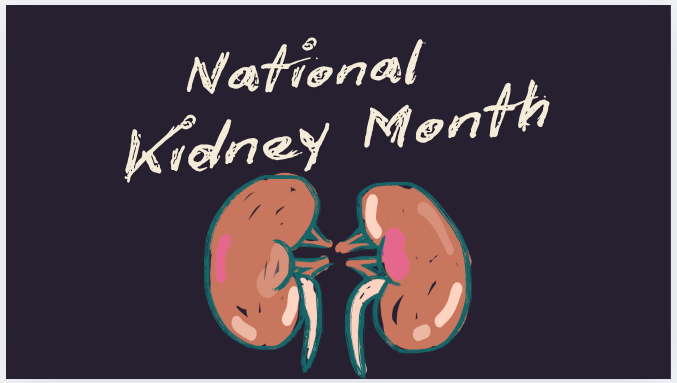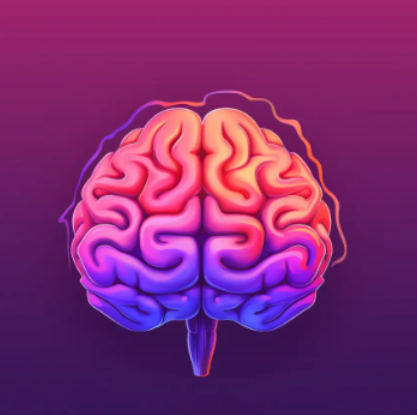Did you know that November is national epilepsy awareness month? More than 65 million people globally have active epilepsy and approximately 3.4 million nationwide. Now you may be asking, what is epilepsy? Epilepsy is a disorder that occurs in the brain, causing recurring seizures. It is estimated that 1 in 26 people have this disorder. Today, I am here to tell you the ins and outs of epilepsy.
Epilepsy happens when abnormal electrical waves occur in the brain. Mayo Clinic describes it as, “An electrical storm inside your head.” There are two main kinds of seizures that can happen, general and focal. General seizures are when the seizures originate and involve all parts of the brain. Focal seizures occur due to only one particular part of the brain. There are different types of epilepsy, which are classified by the part of the brain in which they occur. When most people think of a seizure, they only think of the uncontrollable shaking, but since epilepsy is a neurological disorder ( happens in the brain) it’s so much more than that. Your brain controls everything in your body, and that’s why there are symptoms in a seizure other than muscle spasms. You can also experience stiff muscles, confusion, loss of consciousness, sudden fear, and deja vu. Epilepsy has many causes and no specific groups of people that have it. According to Mayo Clinic, “Epilepsy has no identifiable cause in about half the people with the condition. In the other half, the condition may be traced to various factors, including:
- Genetic influence. Some types of epilepsy run in families. In these instances, it is likely that there’s a genetic influence. Researchers have linked some types of epilepsy to specific genes. But some people have genetic epilepsy that isn’t hereditary. Genetic changes can occur in a child without being passed down from a parent. For most people, genes are only part of the cause of epilepsy. Certain genes may make a person more sensitive to environmental conditions that trigger seizures.
- Head trauma. Head trauma as result of a car accident or other traumatic injury can cause epilepsy.
- Factors in the brain. Brain tumors can cause epilepsy. Epilepsy also may be caused by the way blood vessels form in the brain. People with blood vessel conditions such as arteriovenous malformations and cavernous malformations can have seizures. And in adults older than age 35, stroke is a leading cause of epilepsy.
- Infections. Meningitis, HIV, viral encephalitis and some parasitic infections can cause epilepsy.
- Injury before birth. Before they’re born, babies are sensitive to brain damage that could be caused by several factors. They might include an infection in the mother, poor nutrition or oxygen deficiencies. This brain damage can result in epilepsy or cerebral palsy.
- Developmental disorders. Epilepsy can sometimes happen with developmental disorders. People with autism are more likely to have epilepsy than are people without autism. Research also has found that people with epilepsy are more likely to have other developmental disorders such as attention-deficit/hyperactivity disorder (ADHD). Having both conditions may be related to the genes involved in both epilepsy and developmental disorders.” Epilepsy hasn’t been traced to any one gender, age, or race. However, epilepsy is seen more in children and elderly patients.”Epilepsy can be very dangerous. When having a seizure, you can’t control your body movements. Usually, seizures typically last about 30 seconds to 2 mins. If they last longer than five minutes you should call a doctor immediately. Some dangers of seizures can include broken bones, serious head trauma ( like a concussion or even a brain bleed), inhaling vomit or saliva (which can lead to respiratory problems), bad bruising, cuts (that can be deep and require stitches), burns, drowning (even in just a few inches of water), and sometimes cause irregular cardiac rhythms or even sudden cardiac arrest (heart attack). When somebody suddenly dies while seizing or right after seizing, it is called sudden unexpected death in epilepsy or SUDEP for short. SUDEP happens more frequently in elderly patients rather than others. The CDC says, “SUDEP stands for Sudden Unexpected Death in Epilepsy. It refers to deaths in people with epilepsy that are not from injury, drowning, or other known causes. Most, but not all, cases of SUDEP happen during or right after a seizure. Researchers do not understand the exact cause of SUDEP, but these are possible reasons it happens:
- Breathing changes: A seizure may cause a person to have pauses in breathing. If these pauses last too long, they can reduce the oxygen in the blood to a dangerous level. Also, if a person’s airway gets blocked during a seizure, that can lead to suffocation.
- Heart rhythm changes: Rarely, a seizure may cause a dangerous heart rhythm or cardiac arrest.
- Other causes and mixed causes: SUDEP may happen because of a combination of breathing trouble and abnormal heart rhythm.
Things that may increase a person’s risk of SUDEP include: Seizures that start at a young age, many years of living with epilepsy, missing doses of medicine, and drinking alcohol.” There are about 3,000 deaths in the U.S. due to SUDEP each year. The National Institute of Neurological Disorders and Stroke says, “Seizure triggers do not cause epilepsy but can provoke seizures in those who are susceptible. For those who are already diagnosed with epilepsy and taking medication, triggers can spark a seizure. Triggers include: stress, drinking alcohol, alcohol withdrawal, dehydration, missing meals, exposure to toxins or poisons, hormonal changes associated with the menstrual cycle, sleep deprivation, visual stimulations such as flashing lights are moving patterns.”
Now, here’s the dos and don’ts of helping someone who’s having a seizure. Never restrain or hold down the person. You also shouldn’t put anything in the person’s mouth and don’t relocate the person (unless they’re in a dangerous environment, like the stairs for example). However, you should tip the patient on their side to prevent any vomit or saliva inhalation. Once the person is on their side you should check the time. If the person is seizing for more than five min. Call 911 right away, because this can lead to permanent brain damage. Don’t leave the person until they are fully awake and responsive. The CDC says, “Seizures do not usually require emergency medical attention. Only call 911 if The person has never had a seizure before, the person has difficulty breathing or waking after the seizure the seizure lasts for more than 5 minutes, the person that has another seizure soon after the first one, the person is hurt during the seizure, the seizure happens in water, or if the person has a health condition such as diabetes, heart disease or is pregnant.”
There are a few treatments for people who are epileptic. They include medication, brain stimulating therapy, ketogenic dieting or surgery. Most people can get by fine with just medication ( roughly 90% of adults with active epilepsy actually). However, medication can’t guarantee a seizure free life. Only about 40% of people taking these meds reported to not have experienced any seizures in the past year. Fortunately, this is a disorder that can be grown out of. About 90% of childhood epilepsy cases are outgrown by the time they are adults.
I hope you learned something in this article and can feel confident in an emergency situation. If you have any questions or are more curious about this topic, you can check out the links below!
For more information go to:
- https://www.epilepsy.com/
- https://www.aans.org/en/Patients/Neurosurgical-Conditions-and-Treatments/Epilepsy#:~:text=Epilepsy%20is%20a%20disorder%20of,impulses%20in%20an%20orderly%20pattern.
- https://www.nationwidechildrens.org/conditions/epilepsy











